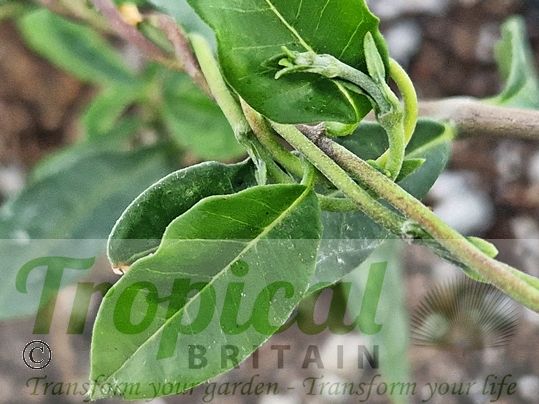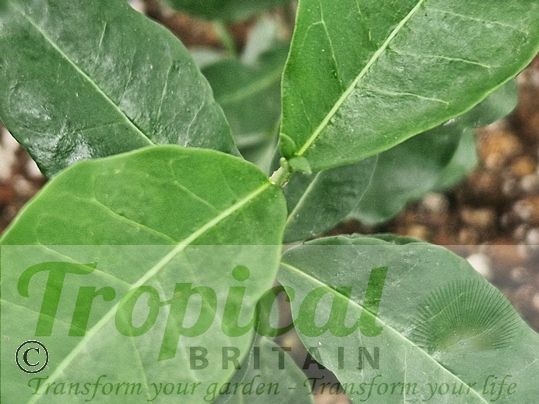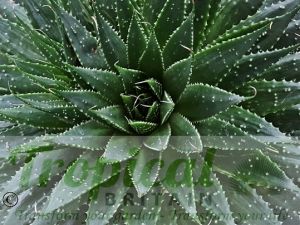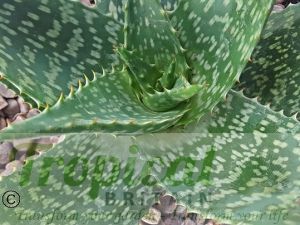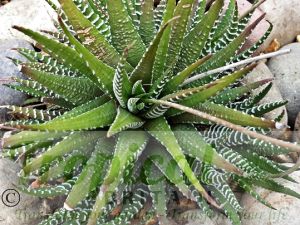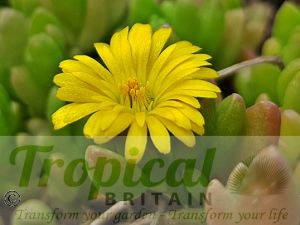Fockea edulis is a caudiciform plant from South Africa where it grows over a wide distribution in dry rocky terrain, savannah and scrub. Over time, it forms a large fat taproot that can be elevated from its usual underground growing condition and displayed as a handsome caudex. It produces many thin, vining, branching stems that grow vigorously, wrapping themselves around anything in the near vicinity. For this reason it is best grown with an elegant wooden trellis or alternatively given a heavy pruning and shaping at the end of each growing season. The stems are adorned with lush, green, oblong, somewhat crinkled foliage and they exude a milky sap when damaged or cut.
Fockea edulis is named after the Surinamese/Dutch lawyer, botanist and ethnologist, Hendrik Charles Focke (1802–1856) who made many plant collections in what was then Dutch Guiana and who published many of his botanical papers in the periodical West-Indie, of which he was an editor from 1854-1856. The specific name, edulis refers to its use among the indigenous Khoi peoples of South Africa who roasted the tubers and then dried and ground them into a flour to make bread, the process deactivating the harmful alkaloids that the plant contains.
An easy caudiciform to grow, it requires a well-drained gritty substrate to keep it happy with regular watering and feeding in the growing season and kept dryish during the winter. Adding bonemeal or any other phosphorus-rich fertilser will enhance the growth of the caudex. Avoid burning direct sun on the foliage and protect from frost.
Additional Information
| Order | Gentianales |
|---|---|
| Family | Apocynaceae |
| Sub-Family | Asclepiadoideae |
| Synonyms | Brachystelma macrorrhizum, Chymocormus edulis, Echites edulis, Fockea cylindrica, Fockea glabra, Pergularia edulis |
| Geographical Origin | South Africa: Northern Cape, Western Cape, Eastern Cape, KwaZulu Natal |
| Cultivation | Well-drained, gritty, sandy substrate. Deep pot. Ideally needs a frame for the climbing stems to wrap around. These can be pruned hard to the base to form thicker growth. Root is best left underground until it has reached a desired fat size. Dry in winter |
| Eventual Height | stems climbing to 2m or more but best kept pruned and shaped |
| Eventual Spread | 60cm |
| Hardiness | Not hardy. Houseplant only. Tolerates a couple of degrees of subzero temperatures but not direct frost. Under layers of fleece if in cool glasshouse |

Free DELIVERY
ON ALL ORDERS OVER £99THIS OFFER IS VALID ON ALL OUR STORE ITEMS.



